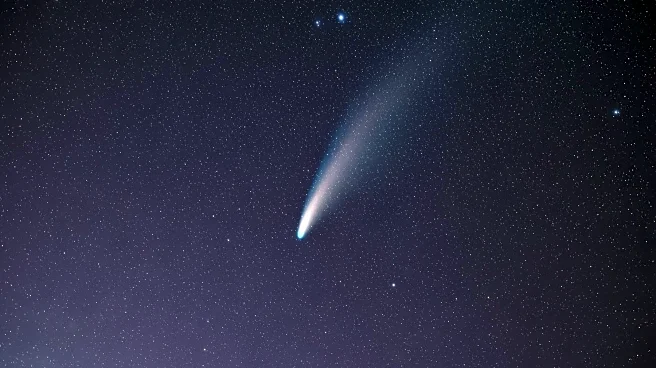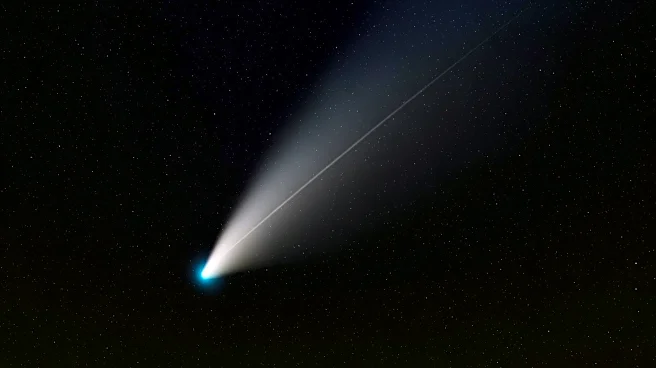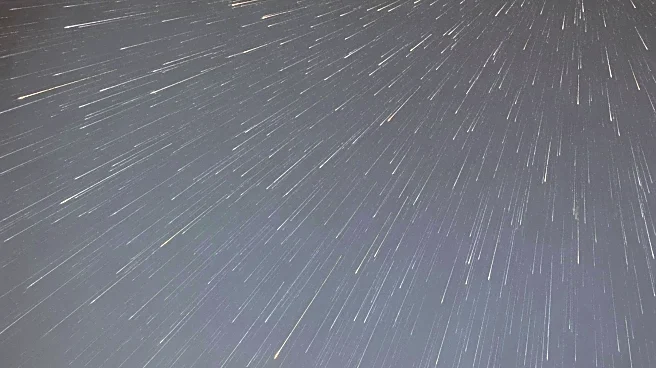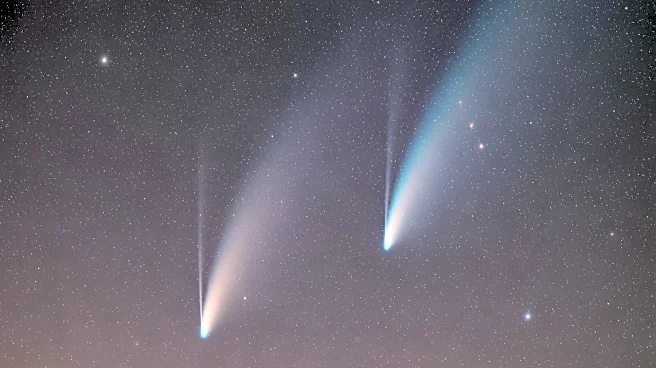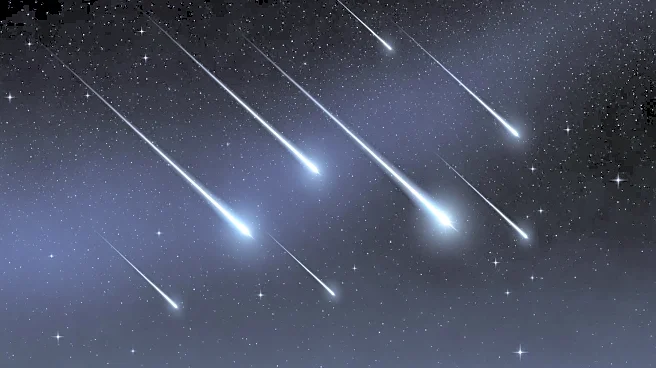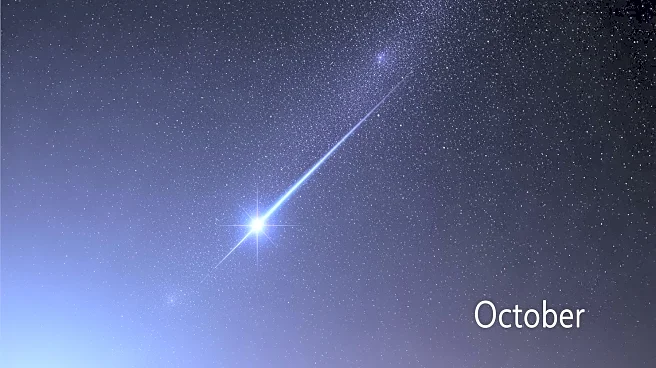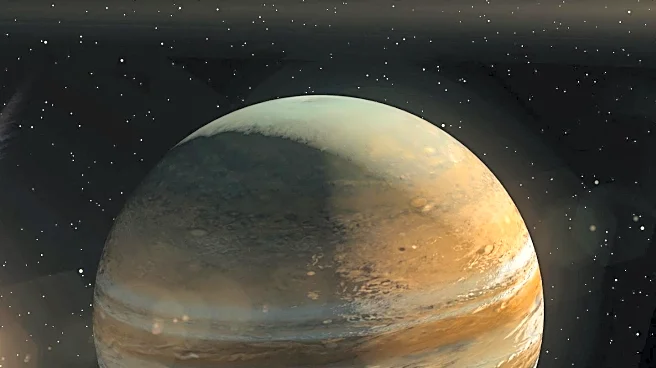What's Happening?
The Pleiades cluster, a well-known group of stars in the constellation Taurus, is visible high in the east by 10 P.M. local daylight time. Concurrently, Comet C/2025 A6 (Lemmon) will make its closest approach
to Earth on October 21, 2025, appearing at 5th magnitude and visible with optical aid. The Orionid meteor shower will also peak on October 21, providing a rich tapestry of celestial events for observers.
Why It's Important?
The visibility of the Pleiades and Comet Lemmon offers a unique opportunity for stargazers to observe two distinct astronomical phenomena. The Pleiades, known for its blue-white stars, is a favorite among amateur astronomers, while Comet Lemmon's close approach provides a rare chance to observe a comet at its brightest. These events highlight the dynamic nature of the night sky and encourage public interest in astronomy.
What's Next?
Observers are encouraged to use binoculars or telescopes to view the Pleiades and Comet Lemmon. The Orionid meteor shower will continue to be visible in the early morning hours, with the radiant highest around 5:30 A.M. local daylight time. Stargazers should take advantage of the moonless sky to maximize their viewing experience.
Beyond the Headlines
The simultaneous visibility of the Pleiades, Comet Lemmon, and the Orionid meteor shower underscores the richness of the autumn night sky. It also highlights the importance of preserving dark sky areas to ensure future generations can enjoy such celestial spectacles.
